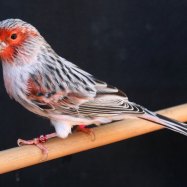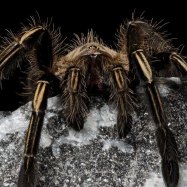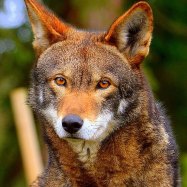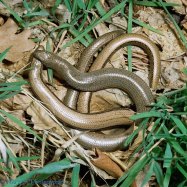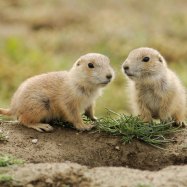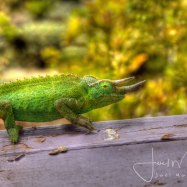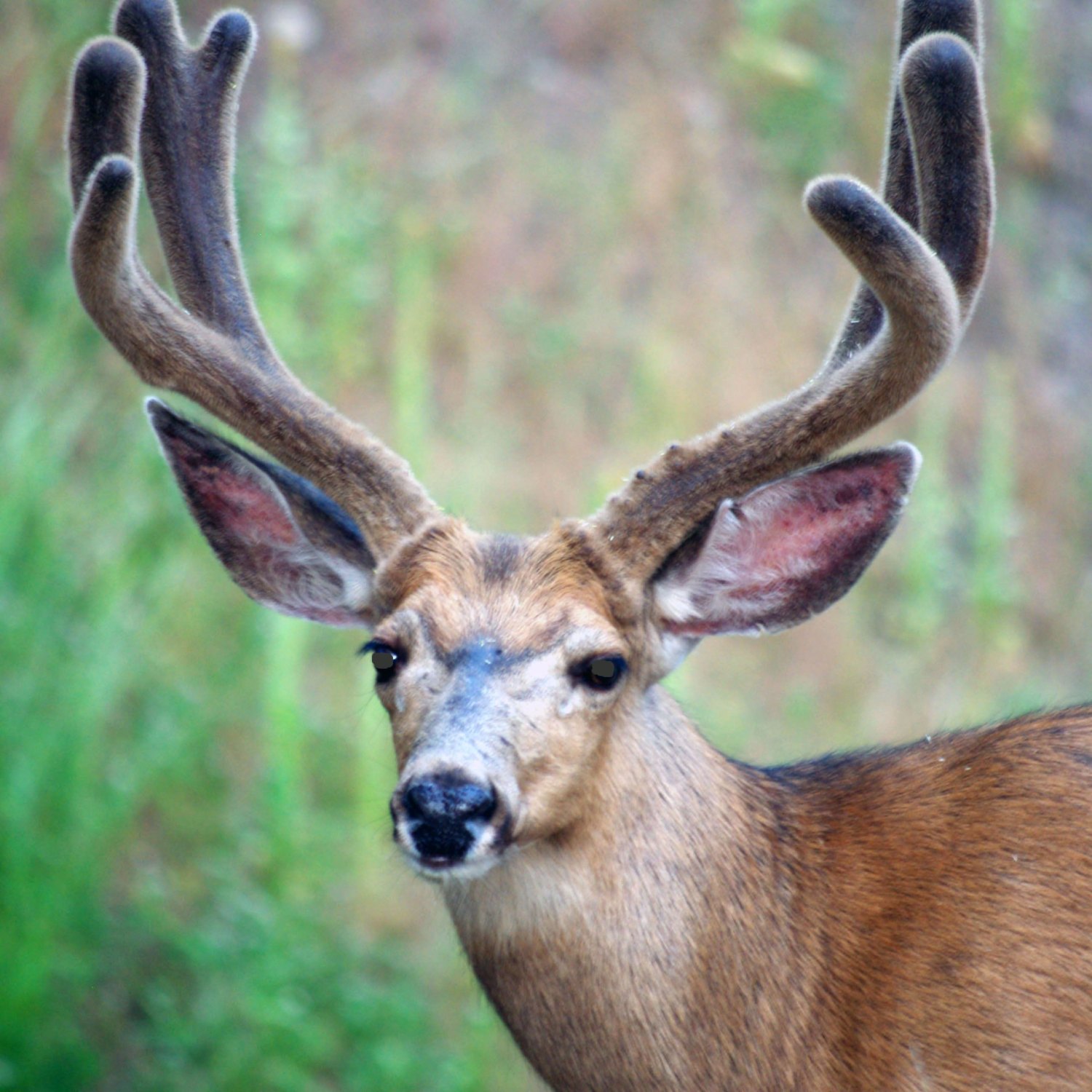
Mule Deer
4.5 to 7 feet
Mule deer, a member of the Cervidae family, are medium-sized animals found across North America. Known for their slender and agile build, they can range from 4.5 to 7 feet in length. These beautiful creatures can be spotted in various locations and are often admired for their graceful movements. Keep an eye out for these majestic animals on your next outdoor adventure! #MuleDeer #NorthAmerica #Cervidae
Animal Details Summary:
Common Name: Mule Deer
Kingdom: Animalia
Habitat: Woodlands, forests, mountains, and deserts
The Fascinating Mule Deer: A Marvel of Adaptation
North America is home to a variety of majestic and fascinating animals, each with unique characteristics and adaptations that have allowed them to thrive in their respective habitats. One such animal is the Mule Deer, known for its distinctive large ears and impressive antlers.Scientifically known as Odocoileus hemionus, this species is more commonly referred to as the Mule Deer due to its resemblance to a mule's large ears. But there's much more to this animal than just its appearance Mule Deer. Let's dive deeper into the world of the Mule Deer and discover what makes them such a remarkable animal.
The Basics: Classification and Distribution
As a member of the Animalia kingdom and the Chordata phylum, the Mule Deer belongs to the Mammalia class, which comprises warm-blooded vertebrates that give birth to live offspring and produce milk for their young. They are then further classified into the Artiodactyla order, which includes hoofed animals with an even number of toes, and the Cervidae family, which also includes other deer species.Mule Deer can be found in various locations across North America, from the western United States to parts of Mexico and Canada. They are well-adapted to different environments and can thrive in woodlands, forests, mountains, and even deserts.
Adaptations for Survival
One of the Mule Deer's most notable features is its large ears, which can measure up to 10 inches in length. These incredibly long ears serve a crucial purpose in their survival. As herbivorous animals, Mule Deer rely on their ears to detect predators sneaking up on them. Their keen sense of hearing allows them to pick up even the slightest rustle in the brush, giving them ample time to escape Mulga Snake.In addition to their impressive ears, Mule Deer also possess a keen sense of smell, which they use to detect potential danger and find food. This heightened sensory ability is essential for their survival in their natural habitats.
Another adaptation that sets Mule Deer apart is their impressive antlers. While both male and female Mule Deer have antlers, the males' antlers are much larger and more elaborate. These antlers serve as a symbol of strength and dominance during the mating season. Males will often use their antlers to battle other males for the right to mate with females.
Aside from their physical adaptations, Mule Deer also have behavioral adaptations that help them survive. For instance, they are most active at dawn and dusk when there is reduced visibility, making it easier for them to avoid predators. They are also known to be very agile and can run at speeds of up to 45 miles per hour, allowing them to escape from potential danger quickly.
A Look at their Physical Characteristics
Mule Deer have a distinct body shape, with a medium-sized, slender build that allows them to navigate through dense vegetation with ease. They have long, slender legs that give them the agility they need to escape from predators swiftly.On average, Mule Deer measure between 4.5 to 7 feet in length and weigh between 130 to 300 pounds. However, these figures can vary greatly depending on factors such as age, location, and availability of food.
Their fur coloration is also quite interesting, with shades ranging from grayish-brown to reddish-brown, perfectly blending in with their surroundings. This coloration is essential for camouflage, allowing them to hide and evade predators effectively.
One distinct feature of the Mule Deer is the white patch on their rump, which is much larger in the females than in males. This patch serves as a warning signal for other deer in the herd, alerting them to potential danger.
The Life of a Mule Deer
Mule Deer are social animals and live in herds during non-mating seasons. Females, also known as does, live together with their young offspring, while males, known as bucks, form bachelor groups. During the breeding season, females will join the males' herds for mating.The gestation period for Mule Deer is around 200 days, and a female can give birth to up to 4 fawns at a time. These fawns are born with their fur and are capable of standing and walking within hours of being born.
Once the fawns are old enough, they will join the female herd, and the males will leave the bachelor groups to form their own herds. This cycle continues year after year, and it is this process that allows the Mule Deer population to thrive.
The Importance of Conservation
Despite their large population and wide geographical distribution, Mule Deer still face threats to their survival. Habitat loss due to human development, competition for resources with livestock, and poaching are just some of the challenges these animals face.Fortunately, there are conservation efforts in place to protect and preserve the Mule Deer population. These efforts include habitat restoration, implementing strict hunting regulations, and educating the public about the importance of preserving these animals and their natural habitats.
In Conclusion
The Mule Deer is a fascinating animal with remarkable adaptations that have allowed it to thrive in various environments. From its large ears and impressive antlers to its agile body and keen senses, this deer species is a marvel of evolution and adaptation.As we continue to learn more about these beautiful animals, it is crucial to also take steps to protect and preserve their population for generations to come. Let us appreciate and admire the Mule Deer and all the wonders of nature that surround us.

Mule Deer
Animal Details Mule Deer - Scientific Name: Odocoileus hemionus
- Category: Animals M
- Scientific Name: Odocoileus hemionus
- Common Name: Mule Deer
- Kingdom: Animalia
- Phylum: Chordata
- Class: Mammalia
- Order: Artiodactyla
- Family: Cervidae
- Habitat: Woodlands, forests, mountains, and deserts
- Feeding Method: Herbivorous
- Geographical Distribution: North America
- Country of Origin: United States
- Location: Various locations across North America
- Animal Coloration: Grayish-brown to reddish-brown, with a white rump patch
- Body Shape: Medium-sized, with a slender and agile build
- Length: 4.5 to 7 feet
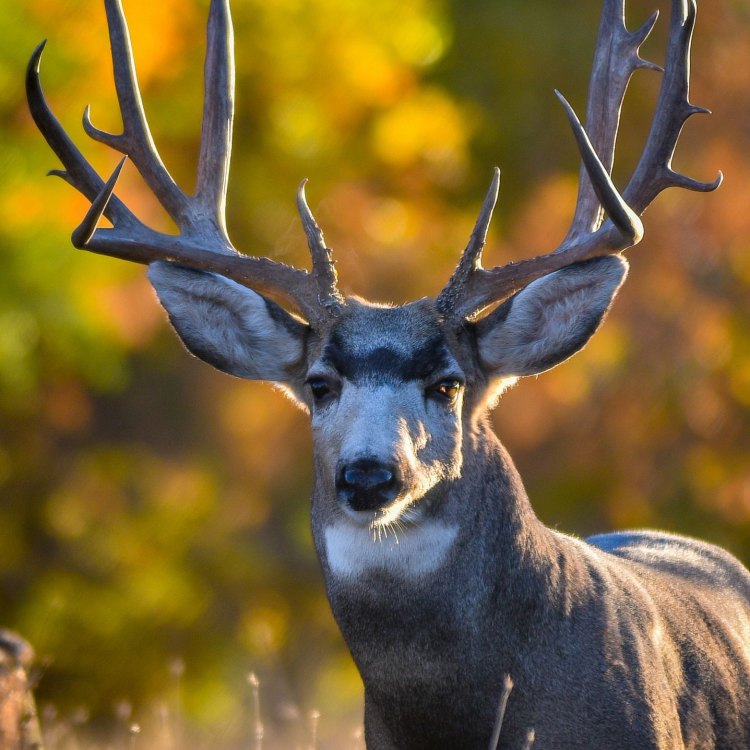
Mule Deer
- Adult Size: 3 to 3.9 feet at the shoulder
- Average Lifespan: 9 to 11 years
- Reproduction: Sexual
- Reproductive Behavior: Polygamous
- Sound or Call: Loud snorts and sneezes
- Migration Pattern: Migratory and seasonal movements
- Social Groups: Solitary or small groups
- Behavior: Nocturnal and crepuscular
- Threats: Habitat loss, predation, hunting
- Conservation Status: Least Concern
- Impact on Ecosystem: Seed dispersal and vegetation control
- Human Use: Hunting and wildlife viewing
- Distinctive Features: Large ears and mule-like ears
- Interesting Facts: Mule deer get their name from their large ears that resemble the ears of a mule
- Predator: Mountain lions, wolves, and coyotes
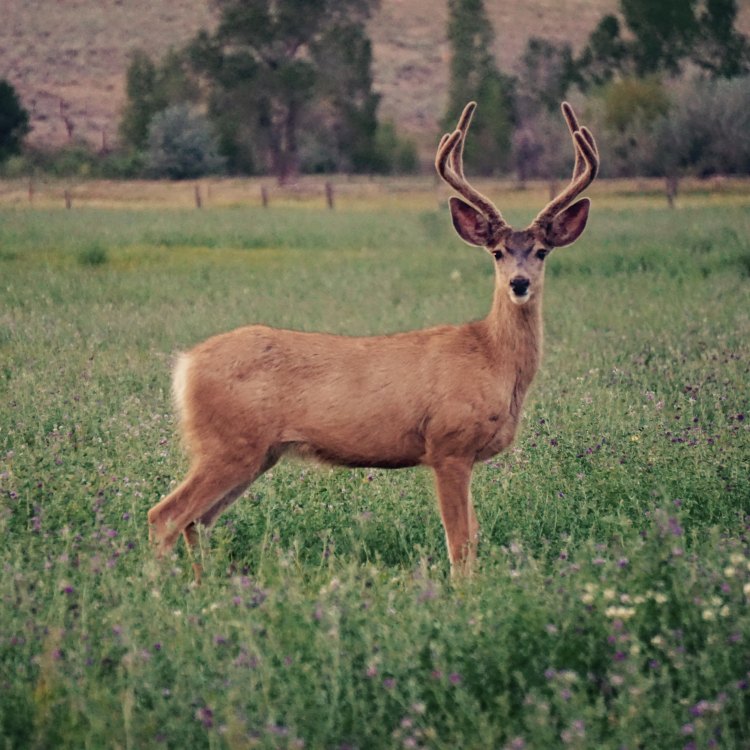
Odocoileus hemionus
The Magnificent Mule Deer: A Fascinating Creature of the Western Landscape
With its distinctive features and fascinating behavior, the mule deer (Odocoileus hemionus) is a unique and iconic species of the western landscape. These graceful and agile creatures can be found from the deserts of Mexico to the mountains of Canada, spanning across 13 western states in the United States. Their impressive size, intriguing reproductive behavior, and important role in the ecosystem make them a subject of great interest to wildlife enthusiasts and researchers alike.Mule deer are the largest of the deer species in North America, reaching an average size of 3 to 3 PeaceOfAnimals.Com.9 feet at the shoulder. They are easily recognizable by their large mule-like ears, which give them their name. These large ears serve a dual purpose for these creatures - they help regulate their body temperature and also amplify sounds, giving them excellent hearing and allowing them to detect predators from a distance.
These majestic creatures have an average lifespan of 9 to 11 years in the wild. However, the mule deer population is facing threats that can significantly impact their longevity. One of the biggest challenges they face is habitat loss due to urbanization and agriculture. As their habitats continue to shrink, mule deer are forced to compete for resources, which can adversely affect their survival rate.
Predation is another significant threat to the mule deer population. Mountain lions, wolves, and coyotes are natural predators of mule deer Mojave Ball Python. These predators are known to target young fawns and weak or injured adults, making it essential for mule deer to reproduce and maintain healthy numbers to avoid being overhunted by their natural enemies.
Mule deer have a unique reproductive behavior that sets them apart from other deer species. They are polygamous, which means that during the breeding season, a male deer, known as a buck, will mate with multiple females, known as does. This behavior helps ensure a diverse genetic pool within the population and increases the chances of producing strong and healthy offspring.
During the breeding season, which occurs in the fall, male mule deer become very vocal, making loud snorts and sneezes to attract potential mates. These vocalizations are also used to warn off other males and assert their dominance. The bucks put on impressive displays of strength, engaging in antler clashes and shoving matches to establish dominance and gain the rights to mate with the does.
Once the rut is over, does will give birth to a single fawn in the spring. These fawns are born with white spots on their fur, making them almost invisible to predators in the thick vegetation. This camouflage, coupled with the mother's exceptional maternal instincts, helps ensure the survival of the fawns. They will stay with their mother for a year, learning survival skills and navigating the forest together.
Mule deer exhibit migratory and seasonal movements, making them a highly adaptable species. They are known to migrate to higher elevations in the summer to escape the heat and seek out better foraging opportunities. As winter approaches, they move back down to lower elevations to avoid harsh weather conditions and find food sources.
Their social behavior is also intriguing, with mule deer being solitary creatures most of the time. However, they can sometimes form small groups of up to ten individuals, primarily composed of females and their offspring. These groups are not permanent and can disband after a short period of time.
Mule deer are mostly nocturnal and crepuscular, meaning they are most active at dawn and dusk. This behavior allows them to avoid the hot temperatures during the day and reduce their chances of being detected by predators. However, in some areas, they have adapted to human presence and can be active during the day as well.
The mule deer is an essential species in the western ecosystem, with a significant impact on the environment. As herbivores, they play a critical role in seed dispersal, helping to maintain healthy plant populations. By grazing on a variety of plants, they keep vegetation in check, preventing overgrowth and maintaining a balanced ecosystem.
Humans have a long-standing relationship with the mule deer, both as predators and as observers. Hunting has been a part of human culture for centuries, with mule deer being a popular game species due to their challenging nature. However, responsible hunting practices are essential to maintain healthy populations and avoid overhunting, which can have devastating effects on the ecosystem.
Wildlife viewing is also a popular activity, especially in areas where mule deer are abundant. These majestic creatures are a delight to watch, with their graceful movements and distinctive features. Many people visit national parks and wildlife reserves to catch a glimpse of these creatures in their natural habitat.
Despite the threats and challenges they face, the mule deer population is currently listed as "Least Concern" on the IUCN Red List of Threatened Species. This is thanks to conservation efforts and hunting regulations that ensure the sustainable use of mule deer populations. However, continued conservation efforts are essential to protect these magnificent creatures and ensure their survival for future generations.
In conclusion, the mule deer is a remarkable and unique species of the western landscape. Their large size, distinctive features, and fascinating behavior make them a subject of great interest to researchers and wildlife enthusiasts. But beyond their beauty and grace, they play a vital role in the ecosystem, making them a species that needs to be protected and conserved. So next time you come across a mule deer, take a moment to appreciate and admire these creatures for their resilience and contribution to the natural world.
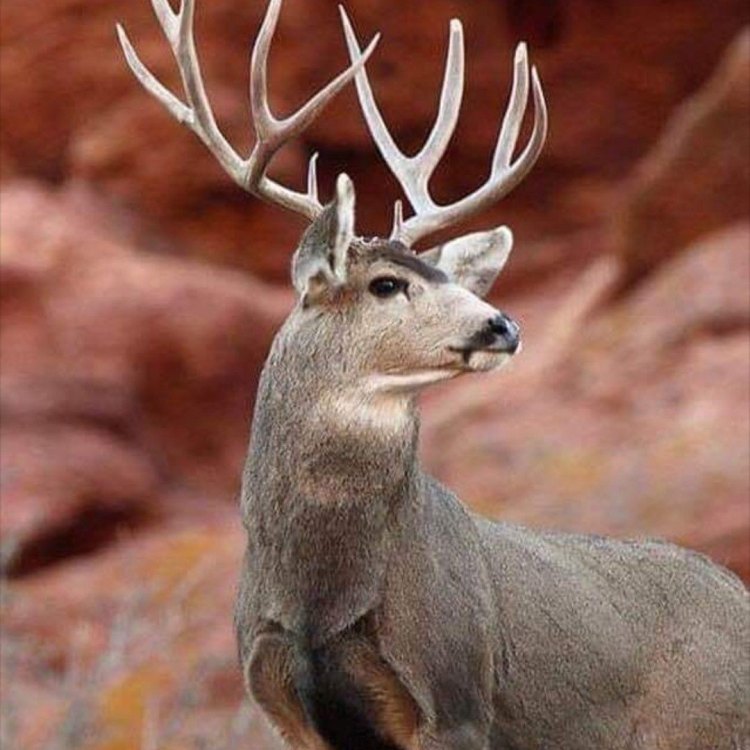
The Fascinating Mule Deer: A Marvel of Adaptation
Disclaimer: The content provided is for informational purposes only. We cannot guarantee the accuracy of the information on this page 100%. All information provided here may change without prior notice.

